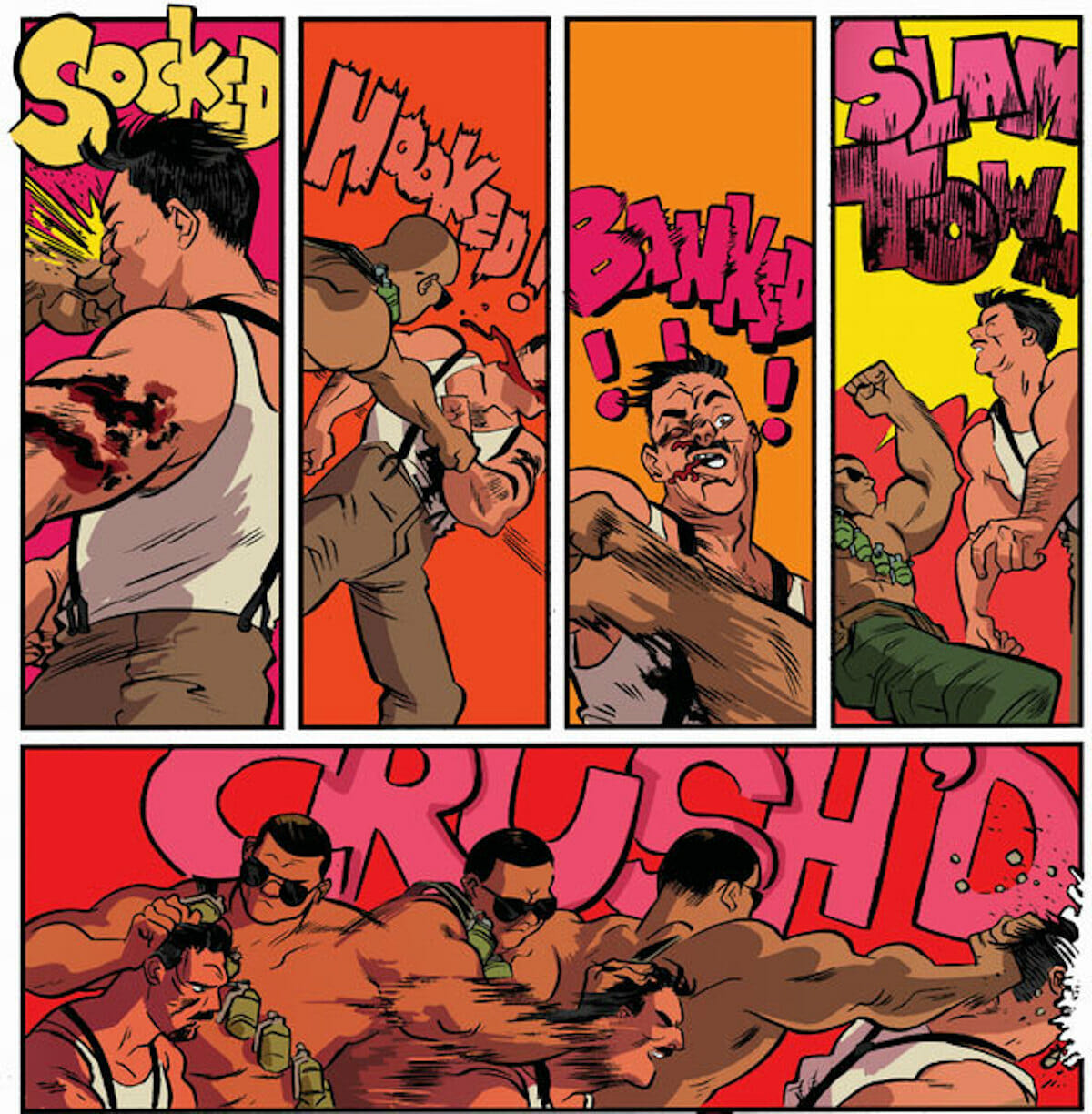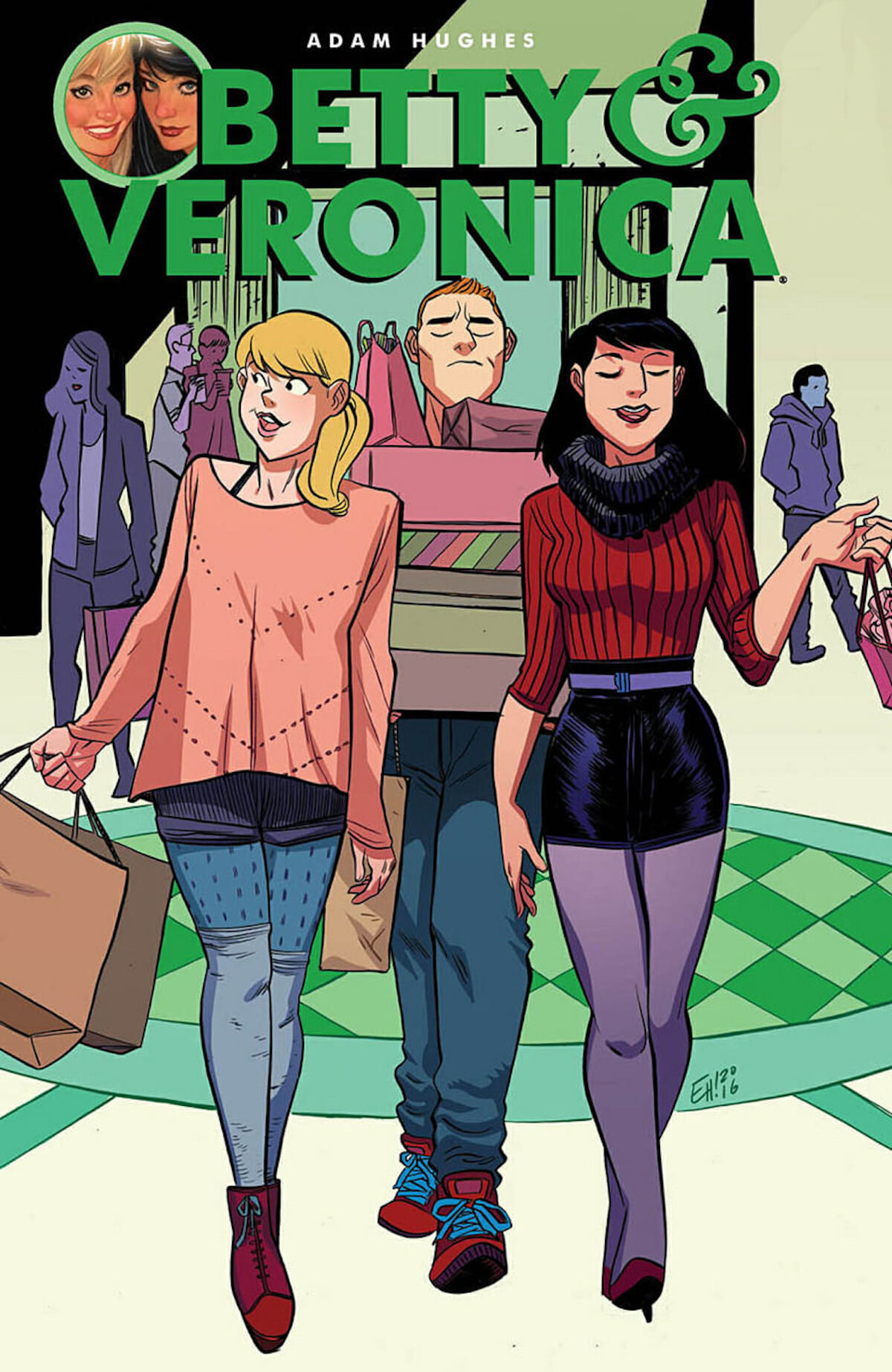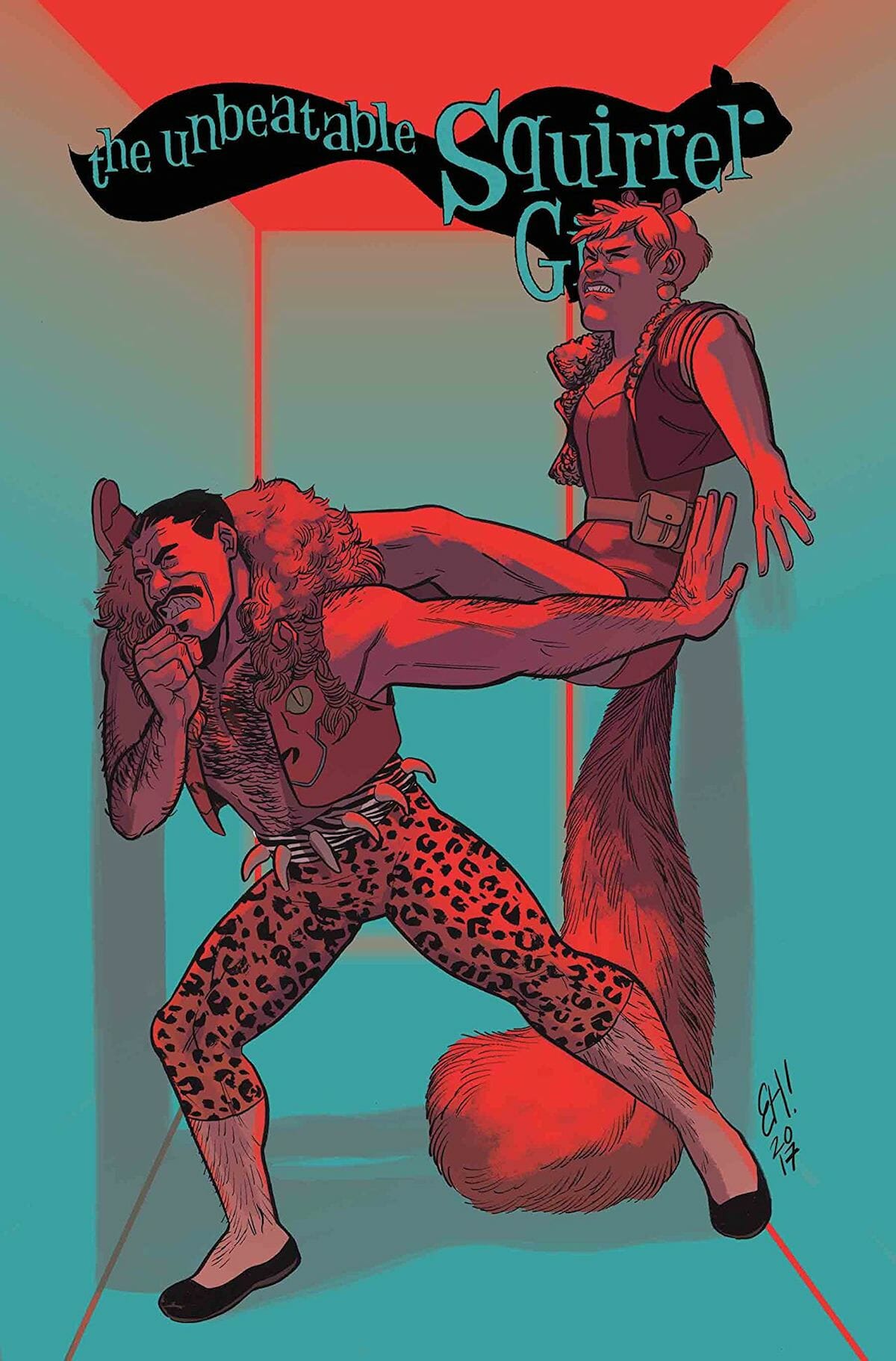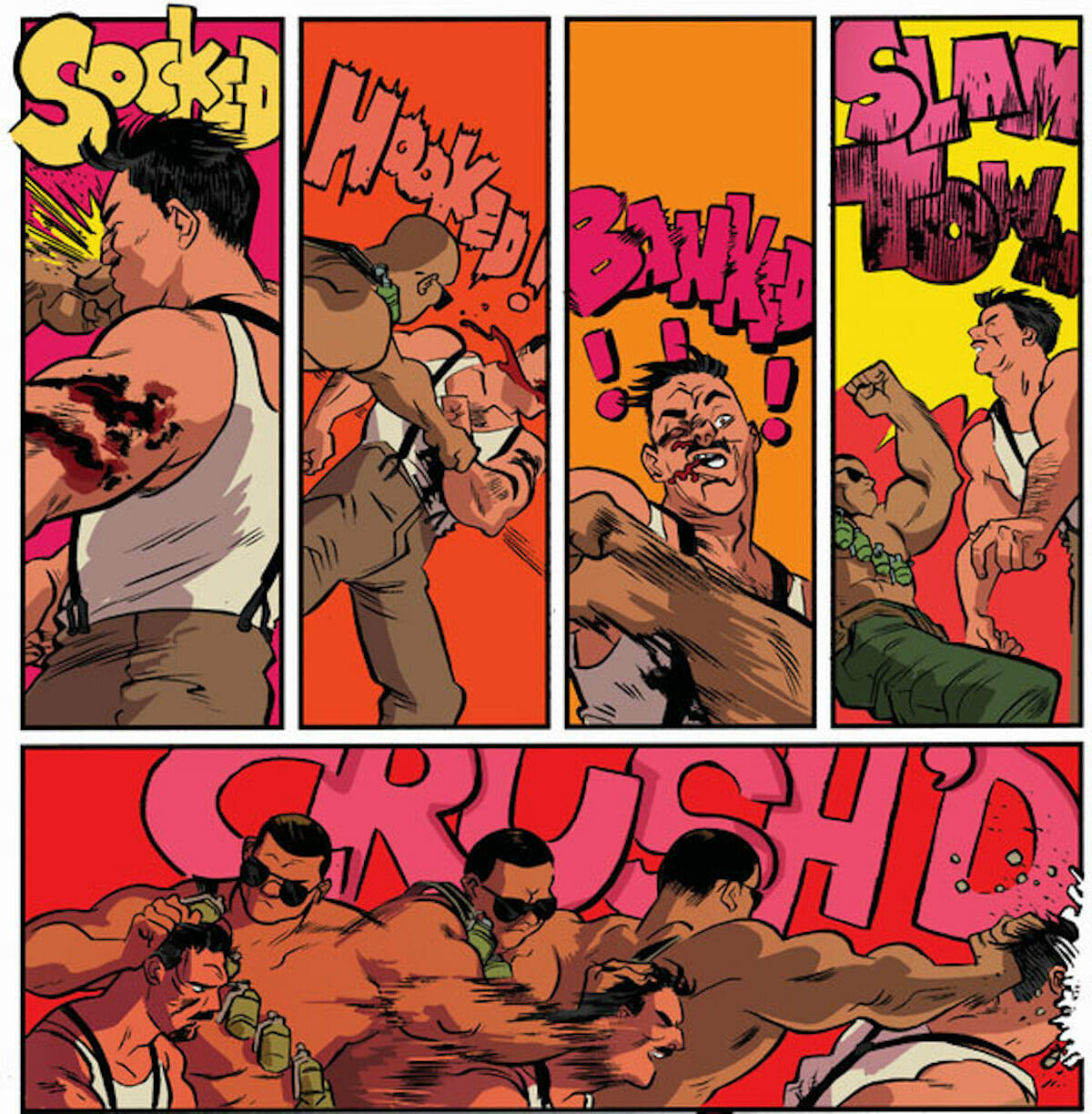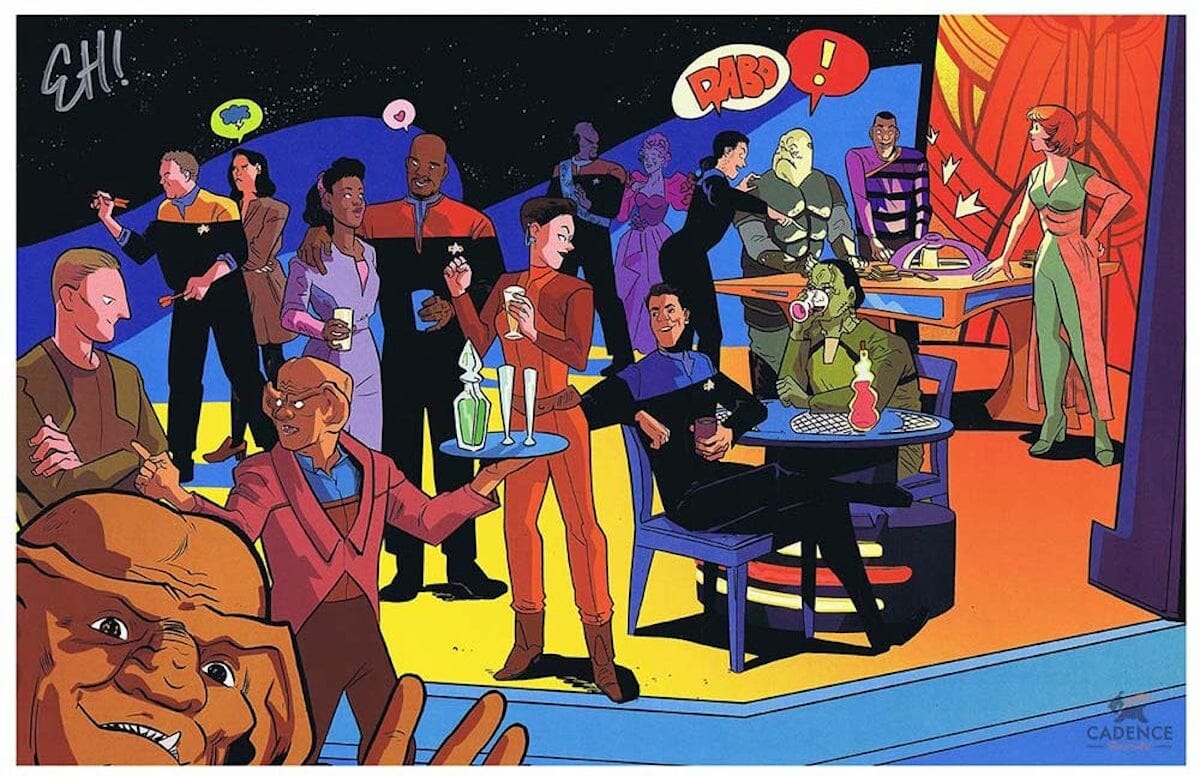Ask any number of comic book fans who their favorite artist is, and you’ll receive any number of responses, each making a strong argument in favor of their choice: Neal Adams brought a level of photorealism to the medium previously unknown, say, or Alex Toth’s mastery of chiaroscuro techniques treated the entire page as a design object in a way that no earlier artist had achieved. (Both statements are true, by the way.) With each new suggestion, the multiple roles that comic art has to fill in order to be successful are further broken down and delineated; we get to see that truly great comic artists need to be designers, directors, cinematographers and more in order to fulfill what their jobs demand of them, and they need to be good at all of these tasks in order for their work to truly sing.
With that in mind, I want to make a statement that is, on its face, utterly hyperbolic and also entirely true: Erica Henderson is likely one of the greatest comic book artists of all time, in no small part because her character acting is among the best the medium has ever seen — and that’s just one of her talents.
For all that her name has become something of a big deal in the comics community, Henderson is an artist known for a relatively small body of work. She came to the attention of most people as the artist and co-creator of the acclaimed all-ages comic The Unbeatable Squirrel Girl at Marvel Entertainment, which she worked on from 2015 through 2018, at which point she moved on to all-new original independent work such as Assassin Nation and this year’s Dracula, Motherfucker!. Somewhere in there, she was also the artist on Archie Comics’ short-lived (but wonderful) reboot of Jughead, paying back a debt owed to Archie illustrators Dan DeCarlo and Samm Schwartz, both of whom Henderson has named as influences on her own work.
The influence both creators have had on Henderson isn’t one of surface aesthetic — Henderson’s work lacks the mid-century advertising-ready polish that DeCarlo’s figures inevitably displayed, no matter their social standing, instead coming across as something more friendly, ramshackle, and all importantly, human. Instead, echoes of their work can be found in the way in which Henderson and the Archie artists stage their stories and place the characters on the page, ensuring that the reader is left with no doubt as to just who and what is central to the story they’re reading at any given time; there’s a clarity to Henderson’s work that feels particularly indebted to the old school structure of Archie in its prime.
There are echoes of Archie in its prime when it comes to the way that Henderson’s characters emote, as well — ways in which the impressive shorthand used by DeCarlo and his followers to signal Reggie’s smugness, Betty’s wholesome heart, or Archie’s horniness in just a handful of lines have evolved to express a far wider range of emotions under Henderson’s pen.
One of the true pleasures of Henderson’s work is her seeming ease at evoking particularly complex and complicated feelings in her characters, no matter the circumstance. It’s Henderson’s ability to make Doreen Green seem simultaneously pissed off, determined and loving that made Squirrel Girl go from joke character to multimedia franchise, with background characters from roommate Nancy to fellow animal-themed hero Koi Boy and recurring guest-star Kraven the Hunter given similar treatment, gifting the latter the ability to have more than two emotions — angry and sad at being defeated — for the first time in the half century since his Amazing Spider-Man debut.
It should be noted that Henderson’s ease with emoting through relatively simple lifework may owe something to a background that includes the animated series The Venture Bros., where she worked during the show’s third season; if there’s one thing animation demands, it’s simple, successful acting on behalf of its on-screen cast.
Subsequent projects such as Assassin Nation doubled down on this gift, with the demands of more mature (but not, notably, more serious) work giving Henderson the chance to stretch her wings in terms of the emotional scope of her characters even as she managed to fold in new and more elaborate action sequences into her work. The 2019 miniseries, in which 20 of the world’s greatest hitmen are hired to be bodyguards for another hitman — who is, of course, under threat of being killed by yet another hitman — offered the chance to produce more complex work in terms of staging and layout, but at no point did that mean she abandoned the clarity or character focus of her work. It was, by any definition, an evolution of her already impressive craft.
That evolution continued with this year’s Dracula, Motherfucker!, a graphic novel inspired not only by the tropes surrounding its title character, but the 1970s exploitation movie genre that transforms Bram Stoker’s intent into something infinitely more pulpy and enjoyably trashy. Again, the ease with which Henderson manages to sell the emotional journey of the various characters in the story is one of the primary selling points of the artwork, but so is so much more; given the opportunity by writer Alex de Campi, Henderson plays with atmospherics through panel layout and color work — informed by the period setting of the story, as well as the gloriously lurid colors of early ‘70s graphic design and cinema — to offer up an example of her strengths as an all-round, all-star talent in her field; she can act, she can art direct, and she can take you back through time without breaking a sweat.
(It’s also arguably the first comic project in which she’s been able to fully explore the aesthetics she’s shown an affinity for on her Twitter feed, a must-follow account where she shares sketches, current obsessions, and the genuinely staggering clothing she designs and makes for herself; even outside of comics, Henderson earns the title of all-round talent.)
Although her career is still relatively young, Erica Henderson has demonstrated over and over that she has the chops to go toe-to-toe (and beyond) with the greats. And she’s only just getting started.
